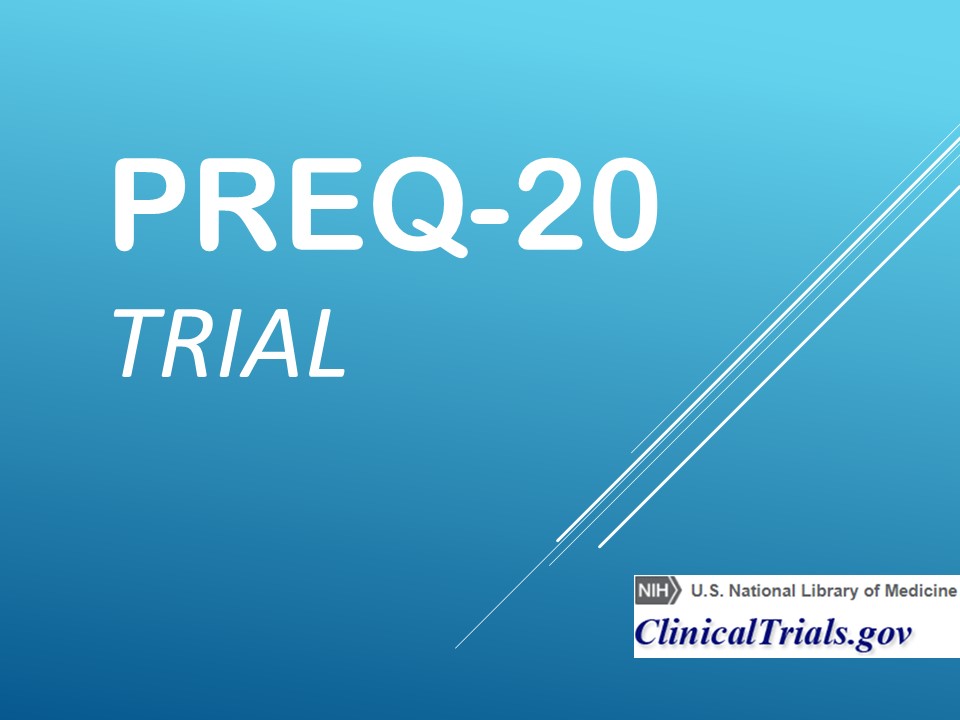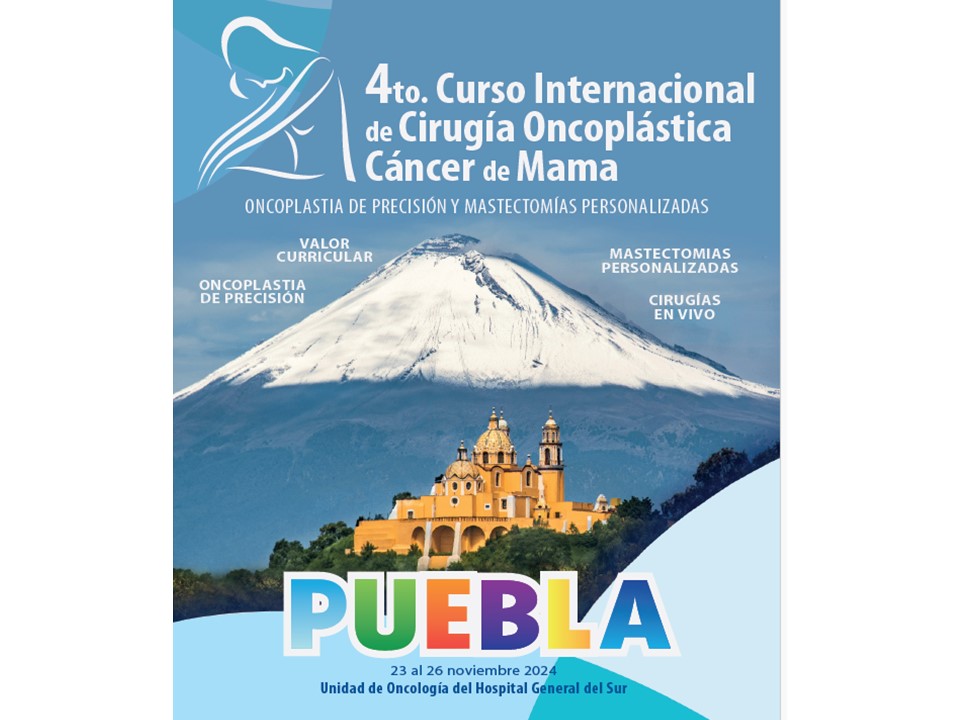Mostrar Contenidos Sensibles


The PreQ-20 TRIAL, a prospective cohort study of the oncologic safety, quality of life and cosmetic outcomes of patients undergoing prepectoral breast reconstruction
Responsible Party: Benigno Acea
Methods
Prospective cohort study to evaluate the safety, quality of life and cosmetic sequelae of breast reconstruction using prepectoral implantation in women with breast cancer and those at high risk conducted in the Breast Unit of the University Hospital Complex of A Coruña, Spain. The study has been assessed and approved by our hospital’s research ethics committee (reference number: 2020/295).
Secondary objectives
- To evaluate the safety of sparing mastectomy through the identification of RGT, primary carcinomas and breast cancer relapses (patients operated on for breast cancer).
- To assess satisfaction and quality of life after prepectoral reconstruction in women with breast cancer and those with high risk.
- To identify factors related to satisfaction and quality of life after prepectoral reconstruction.
- To evaluate the cosmetic sequelae after prepectoral reconstruction in women with breast cancer and with high risk.
- To identify factors related to the cosmetic sequelae after prepectoral reconstruction.
Eligibility criteria
We will include all older women operated on in the Breast Unit through SSM/NSM (unilateral or bilateral) and immediate reconstruction with prepectoral implantation. The study population will include 2 patient groups:
Women with breast carcinoma. This group consists of patients with a histological diagnosis of in situ or infiltrating breast carcinoma, either primary or metachronic, which requires mastectomy as the surgical treatment.
Women at high risk for breast cancer. This group consists of women evaluated at a high-risk consultation and whose RRM has been approved by the tumor committee of the Breast Unit of University Hospital Complex of A Coruña. For this procedure, the patients should meet at least one of the following criteria:
- hereditary breast and ovarian cancer syndrome, either by demonstrated genetic mutation or through their family history.
- histological diagnosis of high-risk lesions (atypical hyperplasia, ductal carcinoma in situ, lobular carcinoma in situ) associated with family history.
- high-risk criteria (genetic, histological, family) during the breast cancer follow-up.
Exclusion criteria
The following clinical conditions were excluded from the study:
- Inability to undergo magnetic resonance imaging during the diagnosis and follow-up.
- Inability to fill out the BREAST-Q questionnaire.
- Unwillingness by the patient to participate in the study.
- Breast sarcomas.
- Benign breast tumors.
- PBR using expanders.
Interventions
Surgical method
- Mastectomy technique
The breast removal will be performed using a mastectomy adapted to the breast and optimizing the preservation of the breast’s original elements (inframammary fold, skin envelope, fat transitions, nipple-areolar complex) according to each patient’s anatomical and oncologic possibilities. To this end, we will employ Carlson type 1, 2, 3 and 4 SSM (22) or NSM through an inframammary incision or vertical pattern.
- Reconstruction technique
The reconstruction will be performed by placing a silicone implant coated with polyurethane foam (MicrothaneTM, POLYTECH Health & Aesthetics Dieburg, Germany. https://polytech-health-aesthetics.com) in the prepectoral position.
Study measurements – Participants’ timeline (see algorithm)
- Preoperative assessment.
All patients will be assessed by a surgeon of the unit who will indicate SSM/NSM and assess its feasibility for each patient. Similarly, the decision for the mastectomy will be made in consensus with the multidisciplinary committee. Before the surgery, the patients will undergo a mammography and magnetic resonance imaging to confirm the tumor size and rule out multifocality/multicentricity, as well as an evaluation of the distribution of glandular tissue and transitions between the breast and chest wall.
The following variables will be collected for all patients:
- Epidemiological variables: age, weight, height, muscle mass index, smoking habit, suprasternal notch-nipple distance and assessment of high risk.
- Healthcare variables: length of stay, surgical time, complications, diagnosis to surgery delay, surgery to first adjuvant therapy delay, readmission, reoperation, postsurgical pain at 24–48 h and in the first week, measured with the visual analog scale.
- Surgical variables: type of mastectomy, surgical specimen weight, implant type and lymph node staging.
- Histological variables: histological type, nuclear grade, final grade, lymphovascular invasion, intraductal component, lymph node involvement and number of lymph nodes affected.
- Oncologic variables: primary systemic therapy, TNM, final staging, chemotherapy agent, radiotherapy, antihormonal therapy and biological therapy.
- Follow-up variables: residual tissue, residual tissue location, tumor recurrence, tumor recurrence location, deformity, deformity location and asymmetry.
- Satisfaction and quality of life variables (using the BreastQ questionnaire): breast satisfaction, satisfaction with the information received, satisfaction with the surgeon, satisfaction with the nurses, satisfaction with the team, social wellbeing, sexual wellbeing and physical wellbeing.
- Breast magnetic resonance imaging
From the clinical standpoint, this diagnostic test is necessary for the follow-up of patients with breast reconstruction for the early diagnosis of relapses and deterioration of the breast implant. This study will employ the first magnetic resonance imaging during the postoperative period (between 12 and 18 months) to assess the residual glandular tissue following the mastectomy.
- BreastQ questionnaire
The BreastQ questionnaire is aimed at evaluating patient-reported satisfaction and quality of life through the use of breast reconstruction modules. The questionnaires are the intellectual property of the University of Columbia (New York, USA), which freely allows their use for clinical research. The questionnaire is presented in 2 formats: the preoperative format, which is delivered to patients before the surgery, and the postoperative format, which is delivered to them 12–18 months after the surgery. Likewise, we will conduct a second postoperative assessment at 5 years of the surgery. The final score for each module will be calculated according to the Mapi Research Trust criteria (23) and will range from 0 to 100 (the higher the score, the greater the satisfaction and wellbeing).
- Images
The evaluation of the cosmetic sequelae requires taking photographs of the patient’s chest (from the suprasternal notch to navel). Photographs will be taken prior to the surgery (frontal, right and left lateral), then again at 12–18 months and finally at 5 years of the surgery.
Sample size
According to the meta-analysis by Wagner et al. (1) and the iBRA study (21), the incidence rate of implant loss is 3.3% and 9%, respectively. Our study will therefore assume that a 5% loss of implants would be acceptable and will use this value for calculating the sample size. Therefore, with a 95% confidence level (95% CI), an accuracy of 5% and assuming a 10% of potential losses during follow-up, we estimated that the necessary sample size will be 81 patients.
Statistical analysis
We will conduct a descriptive analysis of the variables included in the study. All quantitative variables will be expressed with the mean, standard deviation and corresponding 95% confidence interval. Comparison of proportions: The differences between the various qualitative variables will be found using Fisher’s exact test or the chi-squared test (χ2). The qualitative variables will be expressed in proportions and respective confidence intervals. The differences between the quantitative variables will be analyzed using Student’s t-test for independent groups. If the conditions of the t-test are not verified, we will use the Mann-Whitney U test. We will use Kaplan-Meier curves and compare them using the log-rank test to determine those variables related to locoregional relapse and the incidence rate of new tumors, as well as to assess cosmetic deterioration.
The statistical analysis will be performed using version 24 of the statistical program IBM SPSS and Epidat 4.1.
Follow-up
The initial follow-up of the patients will be performed by the surgeon. The immediate complications will be assessed during the first 24–48 h in the hospital (postoperative pain and bleeding). The patients will subsequently be followed in the doctor's Breast Unit office. The first visits will be held at 1 week and at 15 days after the surgery. Visits will subsequently be scheduled at 1 and 3 months of the surgery. If there are any complications and/or incidences, an earlier visit will be scheduled.
The patients will visit the Medical Oncology and Radiation Oncology office to complete their adjuvant therapy. The oncology control tests will be performed according to the Breast Unit’s protocol. During these consultations, data will be collected regarding local and systemic relapses.
The women at high risk will undergo annual check-ups in the Breast Unit office. All study patients will be evaluated at 12–18 months after the surgery to undergo a breast MRI, imaging and to deliver the postoperative BreastQ questionnaire. A second assessment will subsequently be conducted at 5 years during which new images will be taken and the postoperative BreastQ questionnaire will be delivered.
Data collection
The data sets generated and/or analyzed during the present study will be collected in our center’s Breast Unit database and will not be publicly available due to the data protection law and our center’s standard protocol. However, the datasets might be available through the corresponding author.
| Ethics and dissemination The study has been approved by our hospital’s research ethics committee. All included patients will sign a specific informed consent form for the study. This consent form will be delivered by the surgeon in the preoperative consultation during which the patient may ask questions. It is estimated that the preliminary data will be published 2–3 years after the study has begun and that the final data will be divulged at 6–7 years. The data obtained during this study will be published in indexed journals. |

